Explore the fascinating world of sharks with our comprehensive list of 24 remarkable species. We delve into 12 extinct sharks that once dominated the ancient seas and 12 awe-inspiring sharks that continue to rule the oceans today.
Each entry provides a captivating glimpse into these incredible creatures, featuring distinct characteristics, fascinating histories, and unique traits that set them apart.
From the colossal Megalodon to the swift and agile Mako, this list offers a diverse look at the predators that have shaped the marine world across epochs. Join us on this thrilling journey through time.
Megalodon

A titan of the ancient seas, the Megalodon dominated marine ecosystems for millions of years. Picture a creature with a build so immense that it dwarfed most oceanic life.
Megalodon’s teeth, some larger than a human hand, were designed to slice through its prey with deadly precision. This apex predator, often likened to a giant great white, roamed warm waters, hunting whales and other marine mammals.
Fossils reveal an impressive bite force, unmatched by any creature today. Interestingly, the Megalodon’s extinction aligns with the cooling of ocean temperatures and declining prey populations.
Helicoprion

Imagine a shark with teeth arranged in a spiral, resembling a buzzsaw. This intriguing feature belonged to Helicoprion, a prehistoric shark that puzzled paleontologists for years.
This mysterious creature swam the oceans over 250 million years ago, leaving behind only its bizarre whorl-shaped jaw as evidence of its existence. Its feeding habits remain speculative, but it likely preyed on soft-bodied animals.
The unique jaw structure may have been used to slice through prey efficiently. Helicoprion’s legacy is a testament to the diversity and adaptability of ancient marine life.
Stethacanthus

In the Carboniferous period, a shark named Stethacanthus roamed the warm, shallow waters. What set this shark apart was its peculiar anvil-shaped dorsal fin.
This feature likely played a role in mating displays or deterrence against predators. Its small size and unique build made it distinct from other sharks of its time.
Stethacanthus’s lifestyle remains largely a mystery, but its fossilized remains provide clues to its life. With a silhouette unlike any modern shark, it serves as a fascinating example of evolutionary experimentation in the ancient seas.
Cladoselache
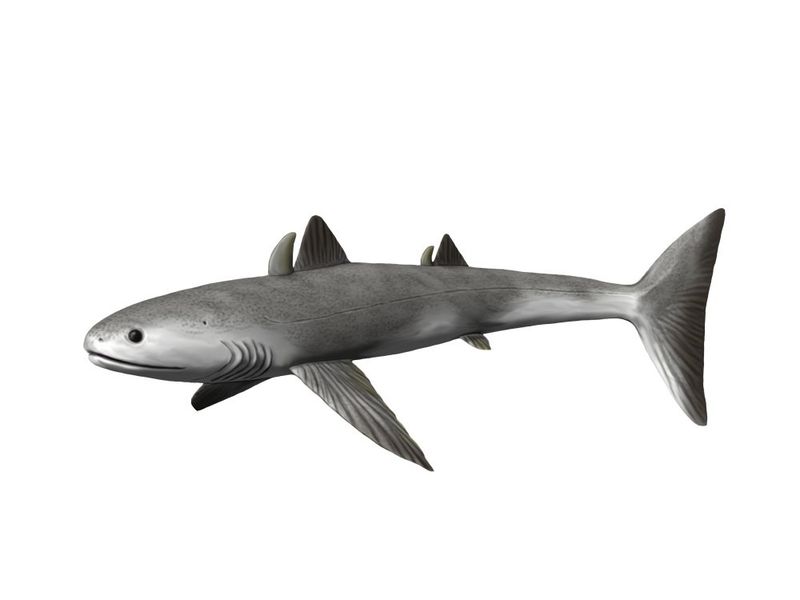
Meet Cladoselache, one of the earliest known sharks, flourishing over 370 million years ago during the Devonian period.
Unlike most sharks, Cladoselache was scaleless, boasting a streamlined body designed for speed. Its diet included small fish and cephalopods, indicative of its agile hunting style. Fossils reveal it lacked claspers, suggesting primitive reproductive traits.
This shark’s evolutionary significance lies in its divergence from modern sharks, offering insights into early cartilaginous fish development. Cladoselache epitomizes the adaptability and evolutionary ingenuity that defined ancient marine predators.
Xenacanthus

Xenacanthus, an unusual freshwater predator, thrived over 200 million years ago. With an elongated, eel-like body, it navigated rivers and lakes, preying on fish and small amphibians.
Unlike its marine relatives, Xenacanthus adapted to freshwater environments, showcasing the versatility of ancient sharks. Its dorsal fin extended down the entire length of its body, an adaptation aiding in maneuverability.
Fossil evidence suggests a long lifespan, indicative of its successful adaptation strategies. As a freshwater pioneer, Xenacanthus highlights the evolutionary paths sharks have traveled across geological eras.
Hybodus

In the Jurassic seas swam Hybodus, a shark with a unique dental arrangement. This ancient predator possessed two types of teeth—sharp for grasping prey and flat for crushing shells.
Such versatility made Hybodus a formidable hunter of fish and invertebrates. Its dual-purpose dentition reflects its opportunistic feeding habits. Often found in fossil-rich areas, Hybodus left behind clues of its widespread presence.
The combination of adaptability and varied diet helped it thrive for millions of years, painting a picture of a shark well-suited to its ever-changing environment.
Carcharocles chubutensis

Before Megalodon, there was Carcharocles chubutensis, a giant shark that paved the way for its more famous descendant.
With teeth slightly smaller but equally menacing, Chubutensis was a dominant force in ancient seas. It targeted large marine mammals, demonstrating its prowess as an apex predator. Fossil records show a lineage progression from Chubutensis to Megalodon, highlighting evolutionary adaptations.
These included increased size and enhanced hunting capabilities. Chubutensis serves as a crucial link in understanding the development of the formidable Megalodon lineage.
Cretoxyrhina

Cretoxyrhina, often dubbed the “Ginsu Shark,” ruled the Cretaceous seas with razor-sharp precision. Its serrated teeth, reminiscent of kitchen knives, could slice through prey with ease.
This sleek predator reached lengths of over 20 feet, preying on fish, turtles, and marine reptiles. Fossil evidence suggests Cretoxyrhina was an agile hunter, capable of high-speed pursuits.
Its remains are frequently found alongside large marine vertebrates, indicating its varied diet. As a formidable predator of its time, Cretoxyrhina exemplifies the lethal efficiency of ancient sharks.
Ptychodus

Ptychodus, a behemoth with a taste for shellfish, cruised the ancient seas with crushing power. Unlike most sharks, its teeth were flat and broad, designed to crush the hard shells of its prey.
This adaptation made Ptychodus a specialized feeder, thriving on mollusks and crustaceans. Fossils reveal a vast distribution, underscoring its success in diverse marine environments.
Its existence highlights the evolutionary paths taken by sharks to exploit different ecological niches. Ptychodus’s unique feeding strategy marks it as a standout among prehistoric marine predators.
Edestus

Edestus, aptly named the “Scissor-Tooth Shark,” possessed one of the most bizarre dental structures in the shark world. Its jaws were filled with teeth arranged like open scissors, a design speculated to slash and segment its prey.
This peculiar feature sets Edestus apart from its contemporaries, adding a layer of mystery to its hunting strategy. Living during the Carboniferous period, it shared waters with other ancient giants.
Fossil remains offer limited insight, leaving much of Edestus’s life open to interpretation, fueling curiosity about its ecological role.
Scapanorhynchus
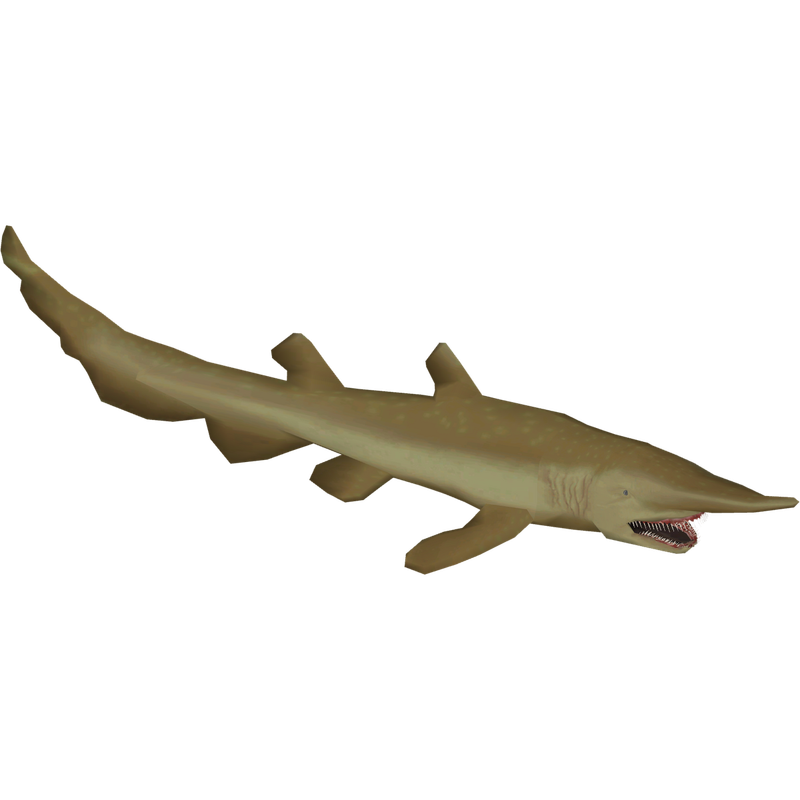
Scapanorhynchus, a distant ancestor of the modern goblin shark, lived during the late Cretaceous period. It featured an elongated snout, similar to its contemporary relative, aiding in detecting prey.
This predator thrived in the oceans, preying on fish and other small marine creatures. Its fossils have been found in various parts of the world, indicating a widespread distribution. Although Scapanorhynchus is long extinct, its lineage continues through its descendants.
The study of its remains sheds light on the evolutionary path of goblin sharks, illustrating the long-standing adaptability of this unique group.
Orthacanthus

Orthacanthus thrived in the swampy waters of the late Paleozoic era. This freshwater shark had an elongated body and a peculiar dorsal spine stretching along its back.
Its environment was lush with plant life, and Orthacanthus was well-adapted to its murky habitat. The shark’s anatomy suggests it was a slow-moving predator, feeding on amphibians and fish.
Fossil records reveal its presence in both freshwater and brackish environments, showcasing its adaptability. As an ancient pioneer of freshwater ecosystems, Orthacanthus highlights the diverse habitats once dominated by sharks.
Goblin Shark

In the shadowy depths of the ocean, the goblin shark lurks with its unusual appearance. Characterized by its long, flattened snout and pink skin, this shark is often referred to as a “living fossil.” Its lineage dates back millions of years, providing a rare glimpse into prehistoric marine life.
With its protrusible jaws, the goblin shark can quickly snatch up prey, a remarkable adaptation for survival. While not a threat to humans, its eerie look makes it a subject of fascination.
The goblin shark’s elusive nature and rare sightings add to its enigmatic reputation.
Great Hammerhead

Majestic and unmistakable, the great hammerhead commands attention with its unique head shape. The broad, flattened hammer provides enhanced sensory capabilities, aiding in navigation and hunting.
This apex predator plays a crucial role in maintaining the health of marine ecosystems by controlling prey populations. Despite its imposing presence, the great hammerhead faces threats from overfishing and habitat loss.
Conservation efforts are vital to preserve this iconic species, ensuring its continued survival in the wild. Its fascinating adaptations and ecological significance make it a cherished subject for marine biologists and enthusiasts alike.
Greenland Shark
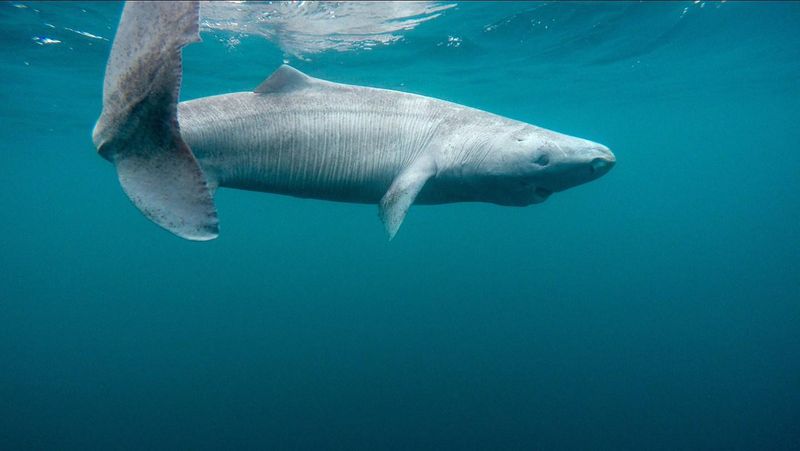
In the frigid waters of the Arctic, the Greenland shark glides with an ancient grace. Known for its exceptional lifespan, this shark can live for over 400 years, making it one of the longest-living vertebrates on Earth.
Despite its slow-moving nature, the Greenland shark is a stealthy predator, often feeding on fish and marine mammals. Its resilience to the cold and ability to thrive in harsh environments make it a subject of scientific intrigue.
As climate change impacts its icy habitat, understanding the Greenland shark’s adaptations is more important than ever.
Whale Shark

With its gentle demeanor and massive size, the whale shark is the largest fish in the sea. Recognizable by its unique pattern of spots, this filter-feeder consumes plankton and small fish, gliding gracefully near the ocean’s surface.
Despite its size, the whale shark poses no threat to humans, making it a favorite among divers and marine enthusiasts. Its migratory patterns and social behavior continue to intrigue researchers.
Conservation efforts are key to protecting this vulnerable species from threats like bycatch and habitat destruction, ensuring it thrives for generations to come.
Tiger Shark

With its distinctive stripes, the tiger shark is both feared and admired. This versatile predator is known for its diverse diet, which includes fish, seals, and even inedible objects.
Tiger sharks play a vital role in marine ecosystems by helping to maintain balance within the food chain. However, they face threats from overfishing and habitat degradation, raising concerns about their future.
Efforts to protect tiger sharks are crucial to preserving their role in the ocean. Their adaptability and ecological importance make them a key species for researchers and conservationists.
Oceanic Whitetip Shark
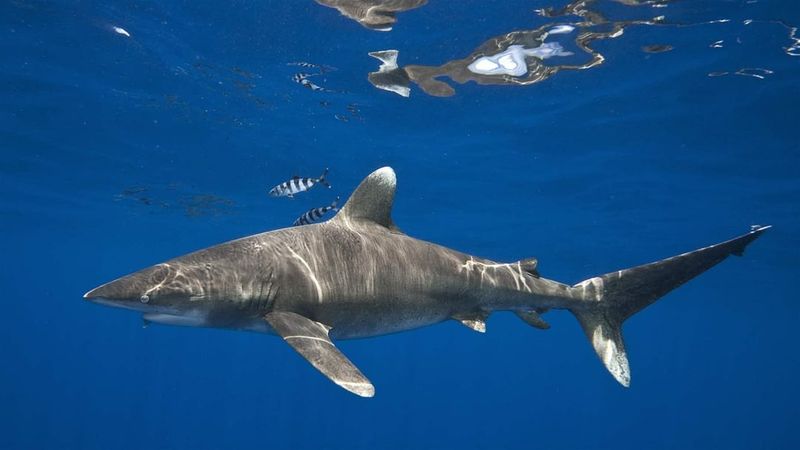
In the vast open ocean, the oceanic whitetip shark is a master of survival. Recognized by its long, white-tipped fins, this shark is an opportunistic feeder, often following ships in search of food.
Its dominance in open waters once earned it a fearsome reputation. However, overfishing has led to significant declines in its population.
Protecting the oceanic whitetip is essential to maintaining marine biodiversity. With conservation efforts, there’s hope to restore its numbers, highlighting the importance of sustainable practices in ocean stewardship.
Bull Shark
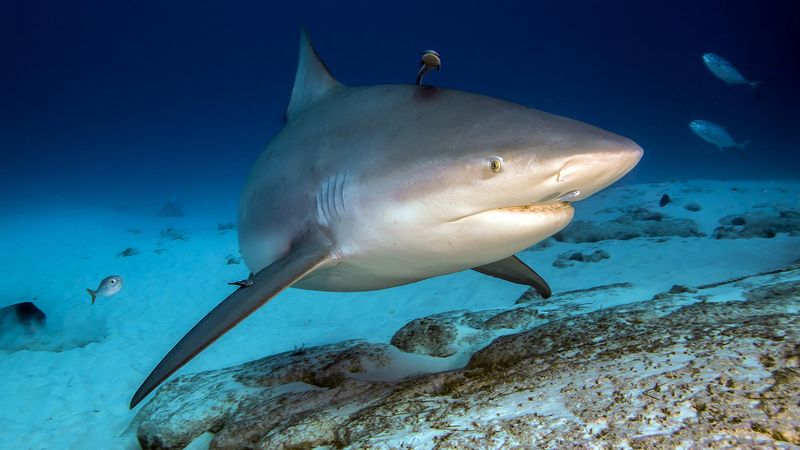
Renowned for its adaptability, the bull shark can thrive in both freshwater and saltwater. This unique ability allows it to navigate rivers and coastal regions, often leading to unexpected encounters with humans.
Bull sharks are formidable predators, known for their aggressive behavior and diverse diet. Their presence in various habitats underscores the importance of understanding their ecological role.
Conservation measures are crucial as human activities continue to impact their environments. Studying bull sharks helps shed light on their life cycles and migration patterns, providing insights into their survival strategies.
Thresher Shark

With a tail as long as its body, the thresher shark wields an extraordinary hunting tool. Its tail is used to stun fish, making it a highly effective predator.
This distinctive feature sets the thresher shark apart, providing a fascinating glimpse into evolutionary adaptations. Despite its prowess, it faces threats from fishing practices and habitat loss.
Efforts to conserve thresher sharks are vital to preserving their unique place in the marine ecosystem. Their behavior and adaptations continue to captivate scientists and marine enthusiasts.
Basking Shark
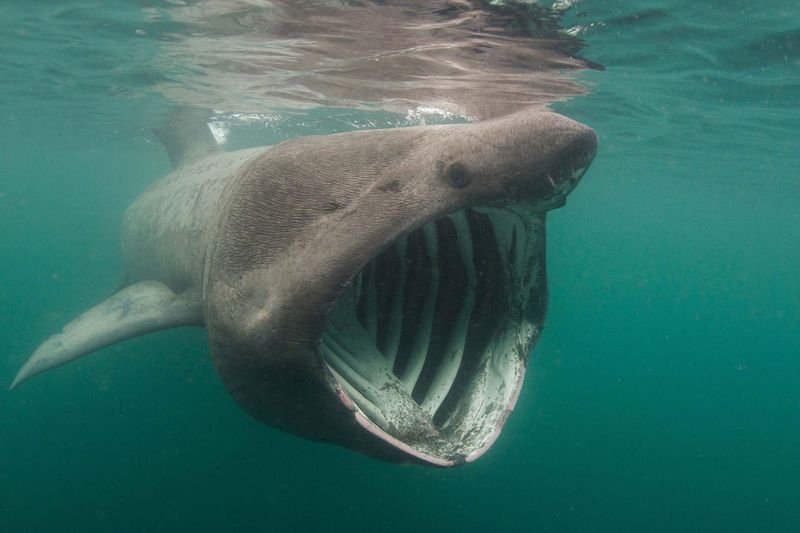
Gigantic yet gentle, the basking shark glides through the ocean with its mouth wide open. This filter-feeder consumes plankton, contributing to the health of marine ecosystems.
Despite its size, the basking shark poses no threat to humans, making it a popular sight for observers. However, its slow reproduction rate makes it vulnerable to population declines.
Conservation initiatives are essential to safeguard the basking shark from threats like bycatch and climate change. Its presence serves as a reminder of the ocean’s diverse and interconnected life forms.
Blue Shark
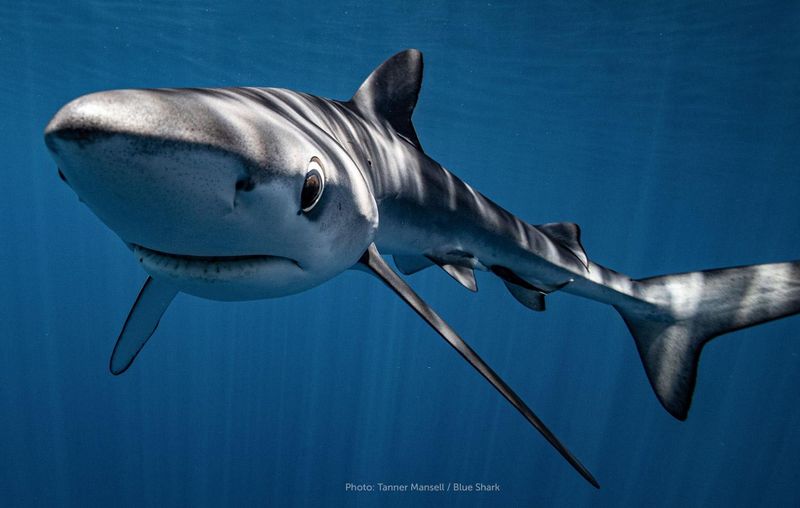
Elegant and swift, the blue shark is a master of the open ocean. Its sleek, slender body allows it to cover vast distances in search of food, primarily feeding on small fish and squid.
The blue shark’s striking appearance and migratory behavior make it a subject of interest for marine biologists. However, it faces threats from overfishing and bycatch.
Efforts to conserve blue shark populations are crucial to maintaining oceanic balance. Understanding their migratory patterns and ecological role helps promote sustainable practices in the fishing industry.
Lemon Shark
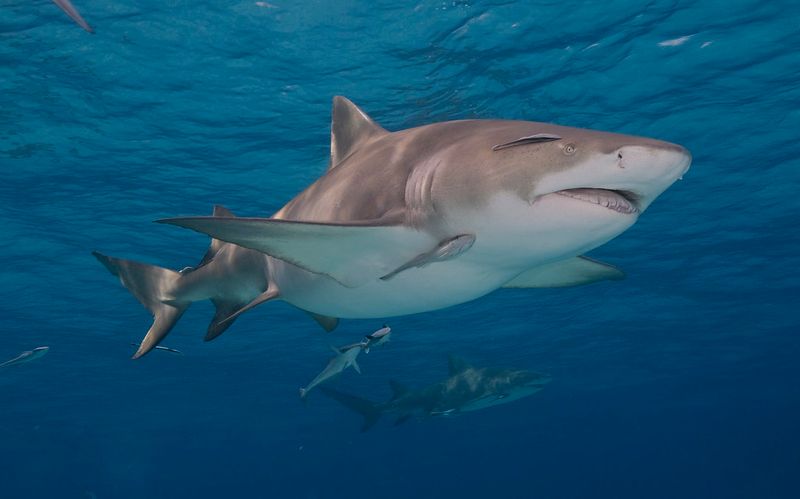
In the warm coastal waters, the lemon shark thrives with its distinctive yellowish hue. This stocky predator is often found in shallow regions, hunting for fish and crustaceans.
Lemon sharks are important to marine research due to their social behavior and adaptability to captivity. However, they are vulnerable to habitat destruction and fishing pressures.
Conservation strategies are vital to protect lemon sharks and their habitats. Their role in the ecosystem and interaction with humans make them a fascinating species for study and observation.
Mako Shark

Renowned for its speed, the mako shark is the fastest shark species, reaching speeds of up to 45 miles per hour. This agility makes it an efficient predator, capable of catching fast-moving prey like tuna and swordfish.
The mako’s streamlined body and powerful muscles are testaments to its evolutionary success. Despite its prowess, it faces threats from commercial fishing and sport hunting.
Efforts to conserve mako sharks focus on regulating fisheries and protecting their habitats. Their remarkable speed and predatory skills continue to captivate marine enthusiasts and inspire conservation efforts.

